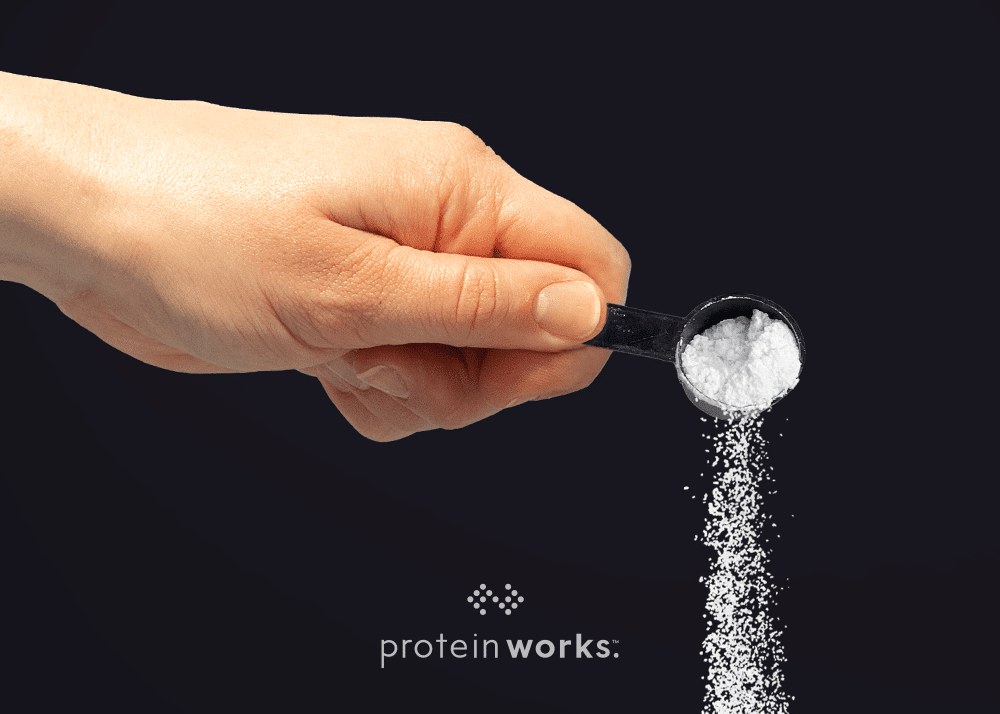
What is the Mind Muscle Connection? How Using Your Brain Can Lead to Serious Gains
Forget your liquid chalk or lifting belt, learning how to implement and improve your Mind-Muscle Connection (MMC) can be one of the best tools to be armed with in the gym for maximum progress and results from your training.
Many of us have a particular muscle or group of muscles that don’t seem to grow as effectively as others, no matter how often they are trained. Frustrating as this may be, a potential solution to this problem has been with you the whole time – your brain!
Whilst we often think of ‘brains’ and ‘brawn’ as opposing characteristics, it has been shown that in order to maximise gains and really see the results of your efforts in the gym, both mental acuity and physical strength are necessary.
You don’t need to receive these instructions from another person for MMC to be effective. By learning to give yourself mental cues during certain exercises, this will ensure that you keep your mind focussed on the muscle and how the movement feels, rather than how many reps you are hitting or the weight you’re lifting. 
What actually is the Mind Muscle Connection?
The mind-muscle connection is an internal focus of attention, which involves directing our attention to the working muscle during strength training.
There are two types of attentional focus:
- Internal focus:
Internal attentional focus means thinking about what is happening inside the body, such as the muscle you’re working contracting during the movement or thinking about your breathing. Internal focus has been defined as:
“where attention is directed to the action itself” (9).
- External focus:
External attentional focus means thinking about what is happening in the environment around you externally, such as the weight you are about to lift or how many reps you plan to do. External focus has been defined as:
“Where the performer’s attention is directed to the effect of the action” (9).
Isn’t this just the latest fitness fad BS?
No, mind muscle connection isn’t just theory, it has been referenced by bodybuilders for decades; Arnold Schwarzenegger himself has long hailed the power of MMC in his training and is quoted as saying:
“The Body Is Very Important, But The Mind Is MORE Important Than The Body.”
MMC has since been a subject of particular interest in the sports science world. In fact, there is research over 20 years old in this specific area, evidencing that greater muscle activation can occur when the training participants focus on internal focus during exercise.
Boost your muscle growth by focussing on each individual muscle during training with our top 5 lifting strategies to help improve your mind-muscle connection:
1. Leave your ego at the door and lower your weight:
Yes, we know this may sound counterproductive if gains are your goal – but hear us out on this one. Lifting too much weight will almost immediately ruin any MMC because if the weight is too much for the muscles to handle the connection the muscle cannot be made effectively.
2. Prime your muscles with activation before each exercise
Many people make the mistake of diving straight into their workout once they arrive at the gym. However, in order to achieve maximum muscle activation (and avoid injury) you should allow your muscles enough time to warm-up and prepare for the exercises. One of the most effective ways to warm up before resistance training is to stretch out your muscles and warm up the joints. Aside from priming your muscles before training, warming up also helps to improve the circulation of blood to muscles and helps you to experience better MMC. 
Flexing and contracting the muscles you’re working between sets can also be helpful in developing MMC.
3. Focus on technique and breathing
When lifting, good form is essential to avoid injury and get the most out of your training. Good form is of far greater importance than the equipment you use, the weight you lift and how many reps you perform. The importance of breathing should also never be underestimated. It can be common when forcing out those last few reps to compromise your form and/or breathing. This is counterproductive to successful MMC and ensuring each rep is performed properly will not only improve activation in the muscle you are trying to target, but also reduce the risk of injury.
4. Focus on the movement, not the weight/rep range
When it comes to executing successful MMC, you need to shift the focus from the amount of weight you’re lifting onto the quality of the reps and track your progress with how the movements feel instead.
5. Slow it down and create tension
Slowing down your reps is a very effective way of improving your MMC and means that isolation movements, such as bicep curls, become much more effective. You will be able to feel your muscles working much harder once your slow your reps down from start to finish. However, you may reach failure earlier than usual but this only exhibits how much harder your muscles were working at a slower pace. 
- Take 2 seconds on the concentric movement (bringing the dumbbell up to your shoulder)
- Pause for 1 second at the top
- Take 2 seconds on the eccentric movement (the force to bring the dumbbell back down)
- Pause for 1 more second at the bottom before starting the next rep, maintaining your focus throughout.
If you’re new to lifting do the same principles apply?
It’s generally recommended that anyone new to lifting spends some time learning how to properly activate their muscles against resistance by flexing specific muscles independently using only bodyweight resistance or light weights to begin, as it is crucial to maintain good form and ensure you are effectively activating your muscles.
Gains aside, are there any other benefits to using mind muscle connection?
Yes, absolutely! It’s a common assumption that lifting the heaviest weight possible equates to greater gains, however this isn’t the case. Whilst it is true that progressive overloading by increasing weight is important for hypertrophy (muscle growth), correct form and technique are vitally important to avoid injury and get the best results from your training. By ensuring you maintain good form, you can shift your focus from the number on the weight and executing the movement perfectly and slowly – to get the most impact on your chosen muscle.This enables you to get a greater impact from using a lighter weight, which means less stress on your joints. Less stress on the joints means less damage, a lower risk of injury and reduction of deterioration.
Does MMC work for everybody?
For those strength training with the goal of hypertrophy (muscle growth), the use of MMC can be extremely beneficial for some, but less so for others. For example, complete lifting newbies may find that MMC is helpful during certain exercises, to provide a point of focus to make sure they perform the exercise effectively to hit the target muscle. Several studies have backed this up with research showing that when people were asked to focus on particular muscle groups, this allowed them to successfully activate those muscle groups (1).
This being said, intermediate lifters might find that MMC can potentially interfere with progressive overload (gradually increasing the weight lifted). This is because intermediate lifters may not be able to increase the weight or number of reps in each set as easily as a complete beginner starting from using just bodyweight or light weights. Progressive overload is often regarded as essential to maintain hypertrophy over a long period of time. As using MMC makes the movement of lifting a weight more challenging, this leads to lowering the weight or reps being performed each set. This can therefore mean that towards the end of a set, the focus on MMC may start to diminish as the priority shifts becomes getting the last few reps out. 
Everybody is different and some people may find they are entirely able to remain focussed on MMC. It may just be a case of trial and error to see what works most effectively for you. If you are an intermediate lifter and find you are making solid progress without MMC, try to incorporate it into some exercises as discussed below and see how it works for you!
The Take Home:
The benefits of MMC are only applicable to strength training where increased activation and muscle growth are the goal (7,8). If your goal is to increase your power with olympic lifting/crossfit style training (think explosive exercises such as the barbell snatch), you should focus more on your technique and performing the exercise correctly with good form, rather than how the exercise feels on specific muscles (4, 6).
If gaining muscle mass is your goal, the mind-muscle connection can be a huge factor is helping you achieve your personal fitness success. So, follow our tips and give it a go to see the benefits for yourself!
Reference List:
- Beardsley, C. (2019). Can using the mind-muscle connection enhance hypertrophy?. [online] Medium. Available at: https://medium.com/@SandCResearch/can-using-the-mind-muscle-connection-enhance-hypertrophy-398de4687bd7.
- Calatayud, Joaquin & Vinstrup, Jonas & Jakobsen, Markus & Sundstrup, Emil & Brandt, Mikkel & Jay, Kenneth & Colado, Juan Carlos & Andersen, Lars. (2015). Importance of mind-muscle connection during progressive resistance training. European journal of applied physiology. 116. 10.1007/s00421-015-3305-7.
- Calatayud, Joaquin & Vinstrup, Jonas & Jakobsen, Markus & Sundstrup, Emil & Colado, Juan Carlos & Andersen, Lars. (2017). Mind-muscle connection training principle: influence of muscle strength and training experience during a pushing movement. European journal of applied physiology. 117. 10.1007/s00421-017-3637-6.
- Ducharme, Scott & Wu, Will & Lim, Kenny & Porter, Jared & Geraldo, Fransini. (2016). Standing Long Jump Performance With an External Focus of Attention Is Improved as a Result of a More Effective Projection Angle. Journal of Strength and Conditioning Research. 34. 276-281. 10.1519/JSC.0000000000001050.
- Höß, Markus & Prinz, Wolfgang. (1998). Instructions for Motor Learning: Differential Effects of Internal Versus External Focus of Attention. Journal of motor behavior. 30. 169-79. 10.1080/00222899809601334.
- Neumann, David. (2019). A Systematic Review of Attentional Focus Strategies in Weightlifting. Frontiers in Sports and Active Living. 1. 7. 10.3389/fspor.2019.00007.
- Schoenfeld, Brad & Contreras, Bret. (2016). Attentional Focus for Maximizing Muscle Development. Strength and Conditioning Journal. 38. 1. 10.1519/SSC.0000000000000190.
- Schoenfeld, Brad & Vigotsky, Andrew & Contreras, Bret & Golden, Sheona & Alto, Andrew & Larson, Rachel & Winkelman, Nick & Paoli, Antonio. (2018). Differential effects of attentional focus strategies during long-term resistance training. European Journal of Sport Science. 18. 1-8. 10.1080/17461391.2018.1447020.
- Töllner, Thomas & Shea, Charles. (2007). Attentional Focus Effects as a Function of Task Difficulty. Research quarterly for exercise and sport. 78. 257-64. 10.1080/02701367.2007.10599423.





No Comments yet!